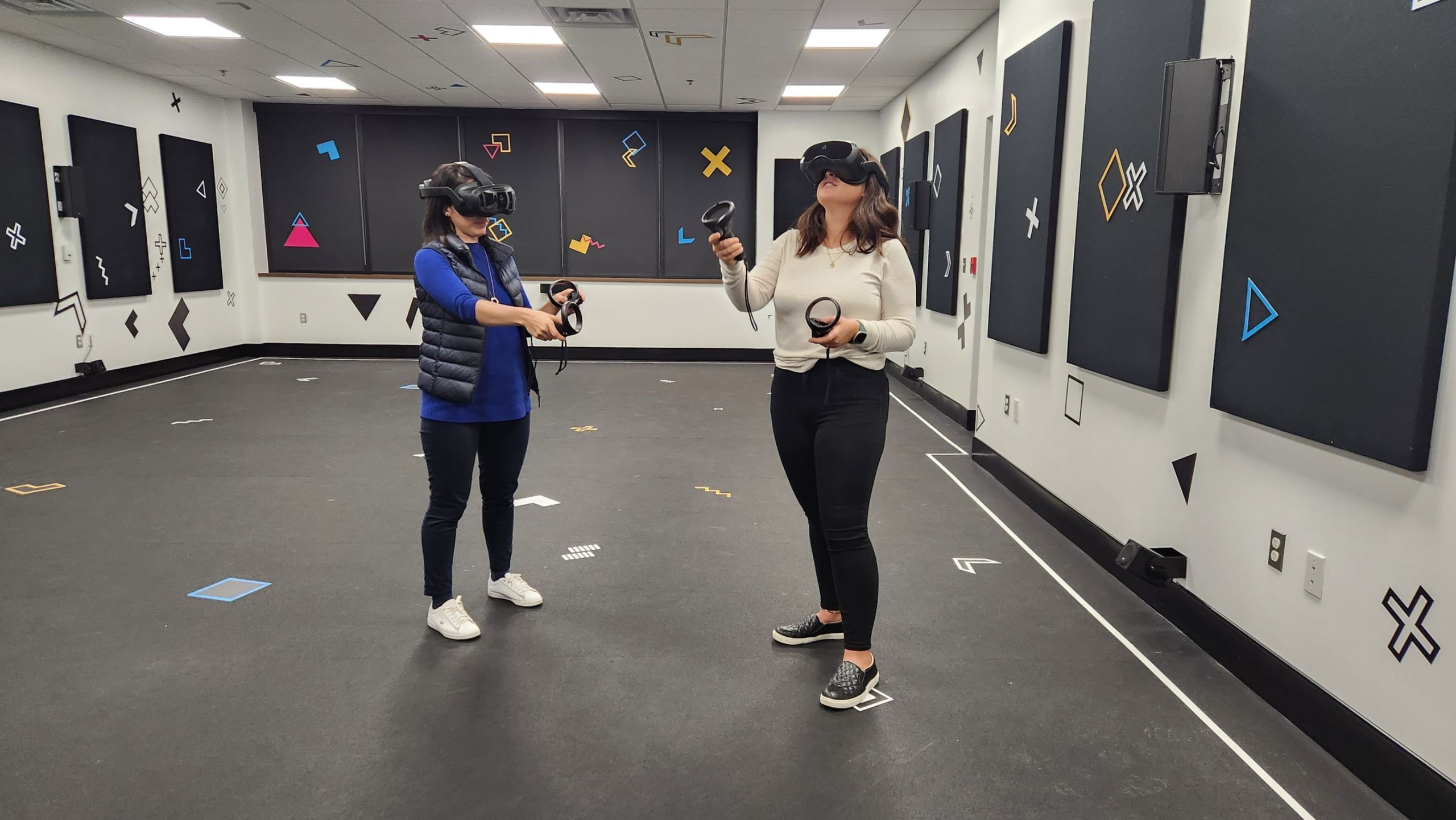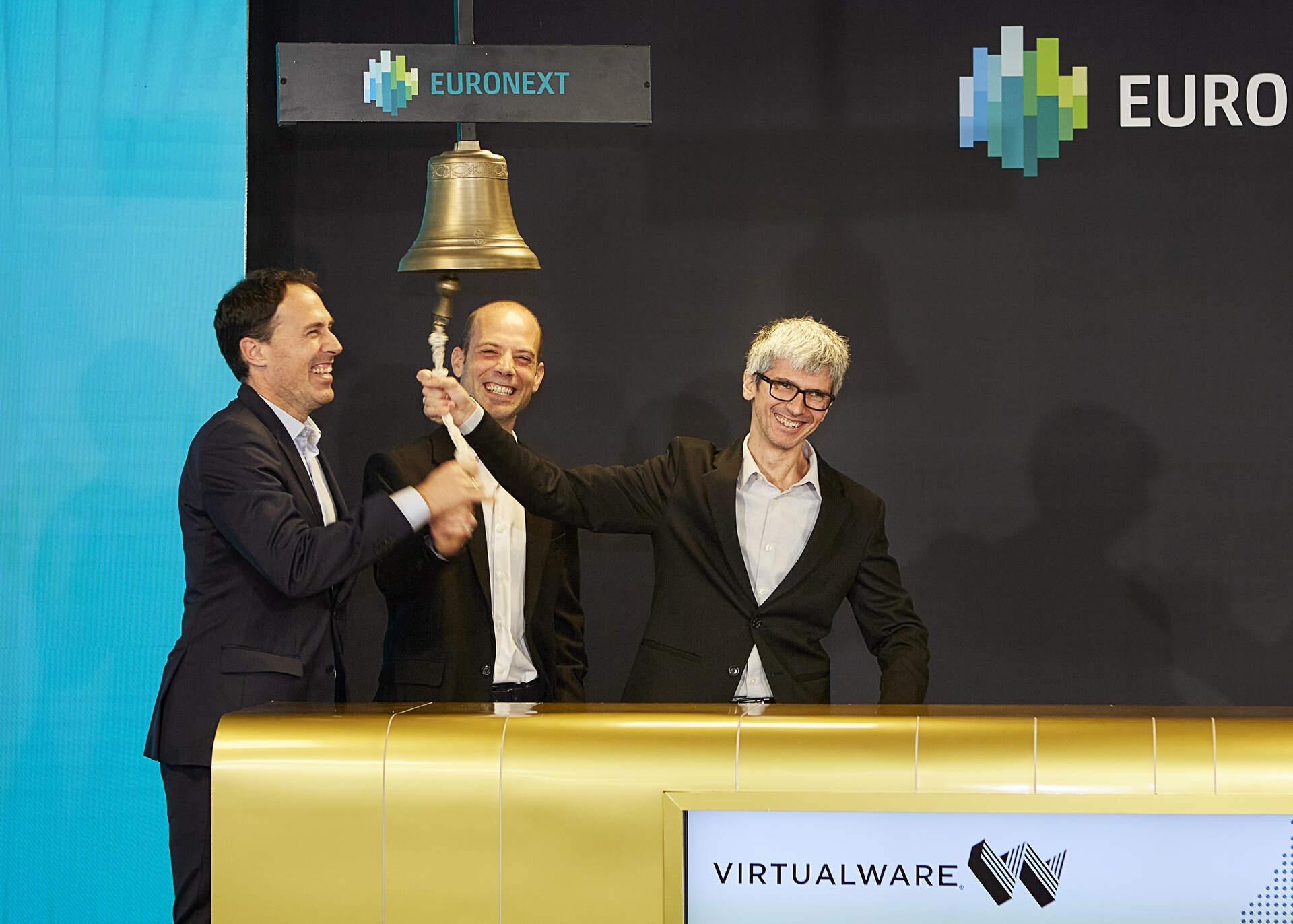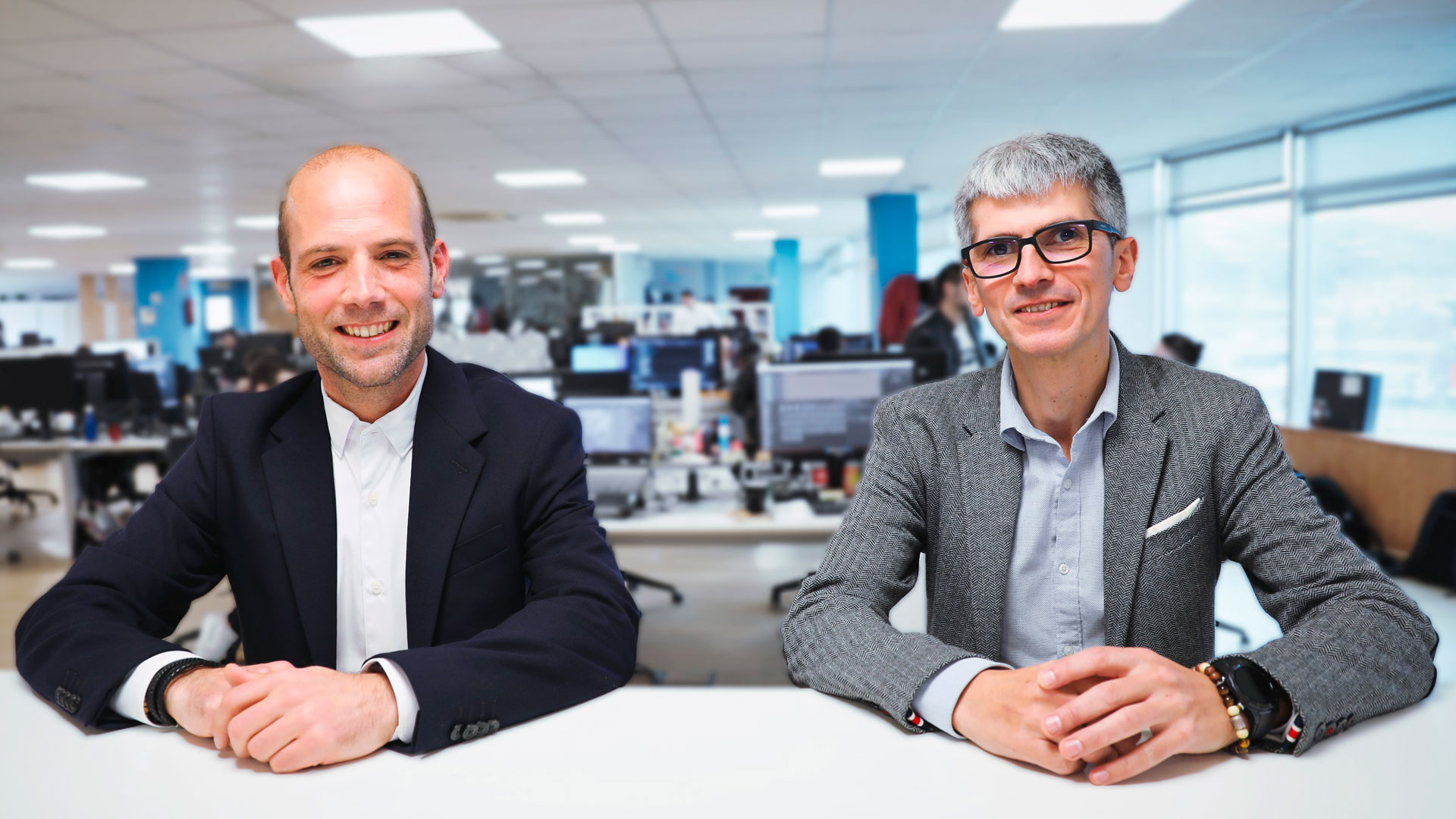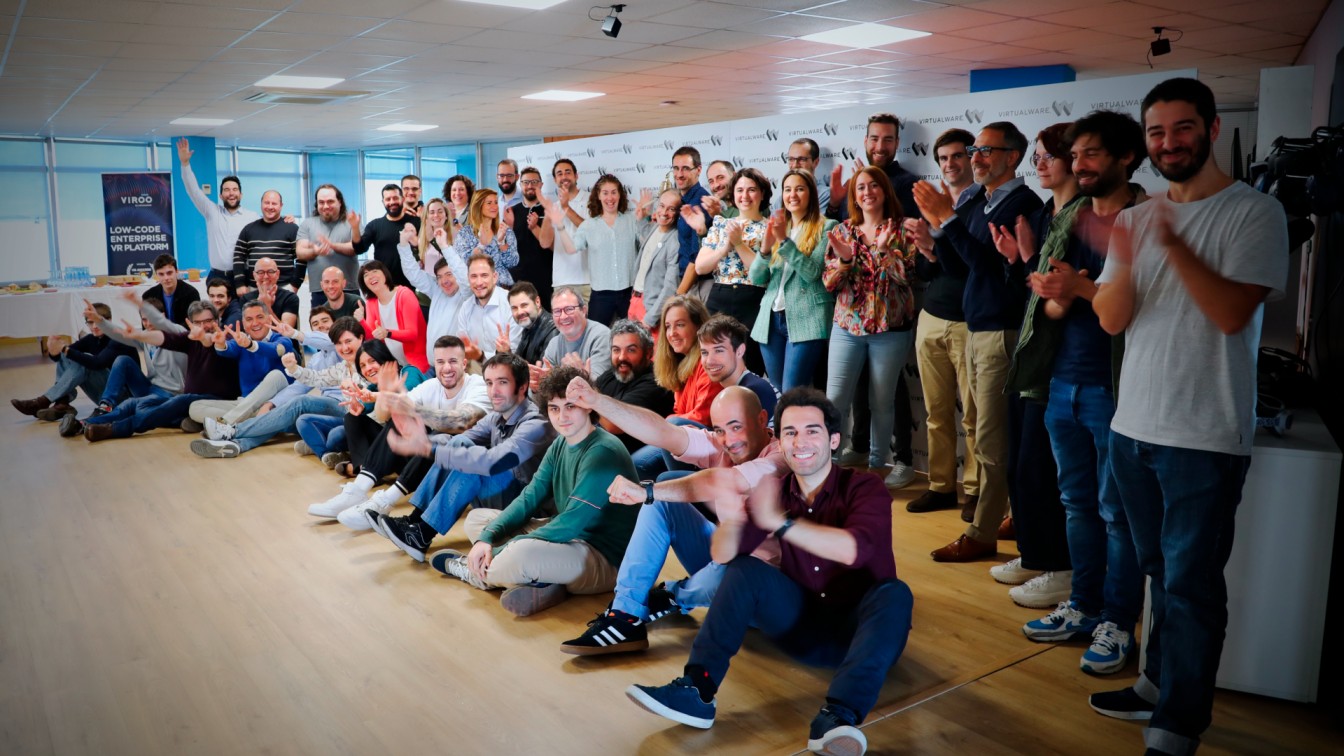We must create virtual realities that solve real problems
In the field of digital innovation, the name of Unai Extremo, CEO of the recently listed technology company Virtualware (MLVIR), has resonated more and more strongly over the last two or three years. The company founded in Bilbao almost 20 years ago – when virtual reality was little more than a philosophical concept – has already been recognized as the most innovative in its sector worldwide. A fact to be taken into account.
MLVIR, which ended last year with sales of more than 3.2 million, has set its sights on double-digit growth for the current year while maintaining its clear commitment to increasing its position in the demanding North American market. The company is developing virtual reality applications for some of the world’s most important industrial conglomerates in fields such as nuclear energy, critical infrastructures, defense, and healthcare.
Founded in 2004 by Unai Extremo and Sergio Barrera – the company’s Chief Technology Officer – with headquarters in Bilbao and offices in Europe and the United States, Virtualware was listed on the Euronext Access of the Paris Stock Exchange on 20 April with a valuation of 27.252 million euros at a price of 6 euros per share. And it has not done badly at all, because at the close of trading on 2 August – the last day it was able to cross trades at the time of writing – it was trading at 8.55 euros, i.e., 42.50% higher and at an all-time high. As a result, its capitalization rose to 38.834 million euros.
A few days ago, on 18 July, what is already the European leader in the industrial virtual reality industry presented the best half-year results in its history. Specifically, it reported total revenues of 2.149 billion euros, a growth of 44.71% compared to the previous year. Most of this growth was due to the revenue generated by the subscription plans of VIROO – the VRaaS platform that has democratized virtual reality – which amounted to 630,000 euros after catapulting 208.23%.
But nothing better than talking to the CEO himself, Unai Extremo, who kindly answered Valencia Plaza’s call to talk about the future of the technology, how it combines with artificial intelligence, and a bit of that slightly spectral idea that is the metaverse. At the beginning of September, the company’s Spanish road show will begin and the ‘cap i casal’ will be the starting point. The following is the conversation we had with the CEO:
“VR FOR INDUSTRY IS AN IDEA WE ADOPTED TO HIGHLIGHT THE CRUCIAL ROLE THAT VIRTUAL REALITY CAN PLAY IN INDUSTRIAL SECTORS.”
First of all, is virtual reality good for something or is it just another fad?
If it were a fad, we wouldn’t have been in the industry for 20 years. The thing is that in the last two or three years, the misunderstood concept of the metaverse has confused things a bit. Virtual reality has to be used for much more than isolating us from the world because social networks have already brought us enough problems. It is about creating virtual realities that solve real problems. Virtual reality – more than a passing fad – is a tool that will revolutionize industry segments and the way we work, prototype, conceptualize, create, and learn.
So, are the applications of virtual reality real?
It is, paradoxical as it may seem. At Virtualware we make everything from nuclear plant simulators that use some of the world’s largest blue chips to simulators where doctors deployed on the battlefield train, to spaces where vehicles are created, where turbine repair is taught, or where ADIF technicians are trained to understand how a catenary works. So imagine.
You coined the concept of VR for Industry. Does that have a future?
Not only does it have a future, but it is a present and growing reality. VR for Industry is an idea we adopted to highlight the crucial role that virtual reality can play in industrial sectors. When an industry adopts our technology it grows faster, creates faster, and can conceptualize remotely. Advances in hardware and software have made virtual reality more accessible and effective than ever before. While the penetration of virtual reality goggles in the consumer market has grown, it has not yet moved beyond the caption. On the industrial side, equipment from brands such as Pico-owned by Bytedance, the owners of TikTok – or HTC are truly science fiction.
Any examples of this?
Industries around the world are already taking advantage of this technology to improve training, facilitate collaboration, increase security and optimize design and production processes. Imagine, for example, an industrial environment where workers learn how to fix catenaries without having to be exposed to electric shocks. That’s VR for Industry, and some of the world’s biggest names like GE Hitachi Nuclear Energy, and international universities like McMaster in Canada, are already committed to it.
A few days ago you announced the best results in your history. What is your assessment?
In the first half of the year, we recorded revenues of 2.1 million, which is more than 44% more than in the same period in 2022. But most importantly, our SaaS line – we call it VRaaS, VR as a Service – is a subscription-based business model that allows creators and companies around the world to create and deploy virtual reality applications quickly and easily. All of this has been a big driver of that result.

Are you talking about VIROO?
It’s about our response to technological change. VIROO was born to enable developers and companies around the world to create their own virtual reality solutions, and adapt them to productive segments. We’ve been in business long enough to know that one of the big barriers in our market is high costs and technological difficulty, so we created a kind of Canva – software and website of simplified graphic design tools – for the virtual reality world. VIROO, which already has a US patent, aims to become the global standard for multi-user VR application development, allowing immersive projects to be built, managed and deployed without restrictions.
VIROO has seen a considerable increase in revenue and demand, what are its distinctive features or advantages that have attracted so many customers?
VIROO is unique because it is a complete, easy-to-use solution that allows companies to harness the power of VR without requiring extensive technical knowledge. We have created a platform on which remote multi-user VR applications can be developed and deployed, which has proved invaluable for industries ranging from education to energy to medicine. In addition, our dedicated support and constant updates keep our customers happy and our product at the forefront.
Is that why you went public?
That and other things. We went public to gain market visibility, increase our shareholder base and strengthen our value proposition. And we did it in Paris, on Euronext, because our vocation is international and European where most of our clients are abroad.

“WE WENT PUBLIC TO GAIN MARKET VISIBILITY, INCREASE OUR SHAREHOLDER BASE AND STRENGTHEN OUR VALUE PROPOSITION”
By the way, how many virtual reality companies are you listed?
There are not so many companies in the sector that are listed. There is an Irish company (Engage XR), which is listed in London; and Glimpse Group, which is on the US Nasdaq. And of course, companies like Meta, which does a lot of other things; or HTC, a Taiwanese VR device manufacturer that comes from the mobile device manufacturing industry.
Is it exciting to ring the bell?
Very much so. And even more so in Paris.
How many investors do you currently have?
We have around a hundred and they were pleased to see how the share soared by almost 42% a few weeks after going public and also at the end of July, when in both cases it reached 8.50 euros per share.
Do you plan to enter other markets?
As soon as Euronext considers it, we want to move to BME Growth. From there, probably to the OTC Markets in New York through a dual listing. Reaching US investors is important to us.
“WE’VE BEEN IN THE BUSINESS LONG ENOUGH TO KNOW THAT ONE OF THE BIG BARRIERS IN OUR MARKET IS HIGH COST AND TECHNOLOGICAL DIFFICULTY”
We hear a lot about the metaverse, but I still don’t know anyone who has virtual reality goggles at home…
And yet there are training centers in large companies where there are dozens of pairs. In the end, real life is much more interesting than virtual reality, which makes all the sense in the world when it is included in the day-to-day work of companies, in training, learning, simulation or prototyping processes. That said, we have a warehouse full of helmets and goggles. That’s two decades of trying and testing.
Looking back, what kind of virtual reality did you do 20 years ago?
Well, we even simulated the running of the bulls at San Fermín, can you believe it? That really seemed like science fiction (smiles).
Virtualware’s global expansion seems to be in full swing with an impressive list of clients and partners. How have you managed to establish business relationships with such prominent international companies and institutions?
Our global expansion has been driven by a combination of factors. We have a robust and adaptable product in VIROO, which meets the needs of companies and institutions in different sectors. We are now developing an international community of developers who use VIROO to serve their local industries. The platform is used in Taiwan, South Korea, the United States, Canada, much of Latin America, and in many training centers in Spain, some of which are in our home country, the Basque Country.
What can you tell us about the roadshow you are starting in September?
Well, Valencia will be the starting point because our advisors (smiles again) are from there. After that, we will go to Madrid, Barcelona, London and Frankfurt.
Your partnership with Sergio Barrera is said to be the cornerstone of Virtualware, can you tell us about your relationship with him and how he has shaped the company?
Sergio – and I’ve heard this from some of the top experts in the US – is one of the best CTOs in the world of immersive technologies. He resurrected the Cave (Computer Aided Virtual Environments) technology when nobody was giving a damn about it, he started developing mixed reality technology years ago and, in general, he always seems to be five years into the future. I also have to add that he has been my friend and partner for two decades.

You can’t forget the rest of the team either.
True, because beyond Sergio – or me – the heart of Virtualware lies in its people. Our team is a group of passionate, intelligent, and creative people who work tirelessly for our shared vision. That’s why, when we went public, we distributed shares to all the employees who have been with us for more than a year, which is the vast majority.
Finally, as someone who is deeply involved in technology, how do you think technology companies can balance their growth while maintaining a commitment to the planet and their people?
Sometimes people are surprised when a VR company talks about improving the world around us, but the truth is that our commitment to sustainability or equity is real. We have been doing social responsibility reporting since before anyone asked us to do it and we try to advocate for a world where virtual reality absorbs some of the blow of the current environmental or social situation in the world.
“SOMETIMES PEOPLE ARE SURPRISED WHEN A VIRTUAL REALITY COMPANY TALKS ABOUT IMPROVING THE WORLD AROUND US, BUT THE TRUTH IS THAT OUR COMMITMENT TO SUSTAINABILITY OR EQUITY IS REAL.”


